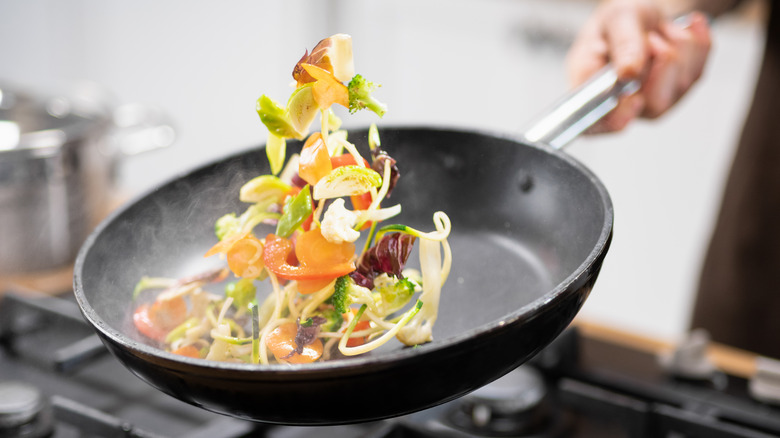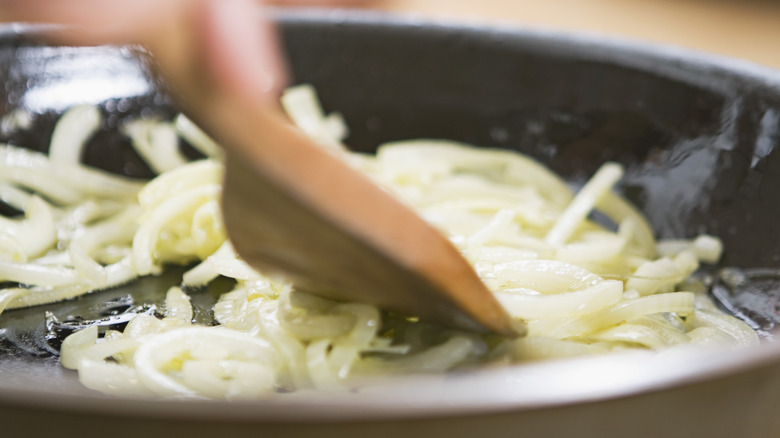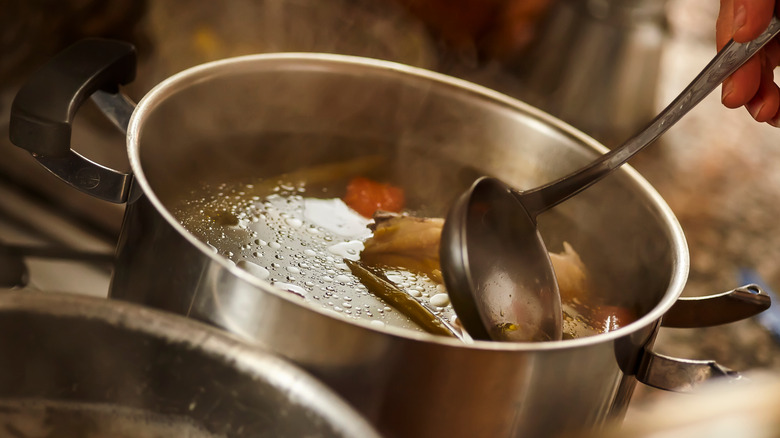What's The Difference Between Sautéing Vs Simmering?
Learning the ins and outs of the kitchen is a lifelong process. There is a lengthy list of basic cooking methods you need to know to comfortably call yourself a competent chef. Though these myriad methods all involve heat, each calls for a different set of tools and, perhaps more importantly, takes a wide range of time.
In fact, time is the key difference between two techniques that, at first glance, may seem quite similar – sautéing and simmering. The former involves giving foods a quick flash in a frying pan over the stove burner. The pairing of speed and high heat when sautéing necessitates consistent stirring. On the other hand, simmering is a considerably slower process, wherein your food is finished by spending a lengthy stint sitting on the stovetop. Knowing when and with what ingredients you should be sautéing or simmering is an invaluable cooking skill to have tucked away in your tool belt.
Sautéing makes food fast
Many foods can be prepared via sautéing. While this may be the food you are most familiar with — like sautéing vegetables – you can also use this cooking method for other foods requiring less heat exposure, like fish and other meat.
To start sautéing, you need to first heat your pot or pan to somewhere between 350 and 450 F. Then, drop a small amount of fat onto your heated cooking surface. The high temperatures that are called for when sautéing mean that your food is regularly moved, so no single surface will absorb too much heat. In addition, sautéing, unlike simmering, is a dry process, meaning that there is no liquid that needs to be boiled off before your food begins to burn, so it is a relatively involved cooking method.
Simmering needs a slow burn
On the other side of the cooking spectrum is simmering. As opposed to sautéing, which requires some fat source, simmering only needs liquid. The low-and-slow simmer is an incredibly versatile technique to use in the kitchen, and it is a much more delicate process than sautéing.
Simmering doesn't call for a cook to use such high temperatures. In fact, you should only simmer your food around 185 F, which is slightly below the boiling temperature of liquids, 212 F. You'll know food is simmering when tiny bubbles begin to rise to the surface of your pot or pan. Simmering is a time-consuming process for dishes that need to slowly develop flavors, like soups and stews.
If you find yourself frustrated when simmering your stew, some steps can be taken to speed up the process. Keeping the lid on your kitchen utensil will shorten the simmer time. Before covering your dish, you should check the recipe instructions and ensure that what you're making is amenable to a quicker cooking time.


